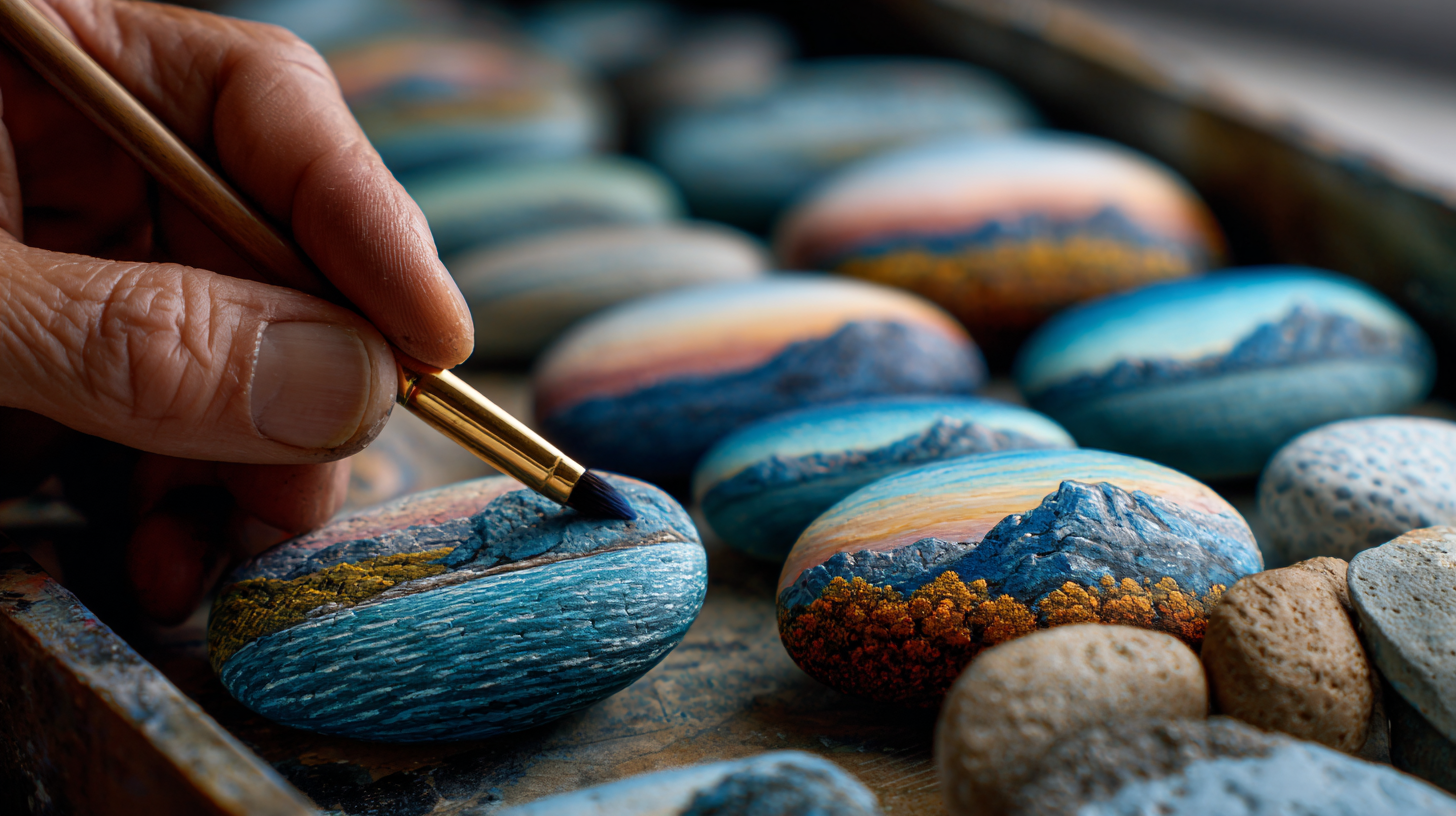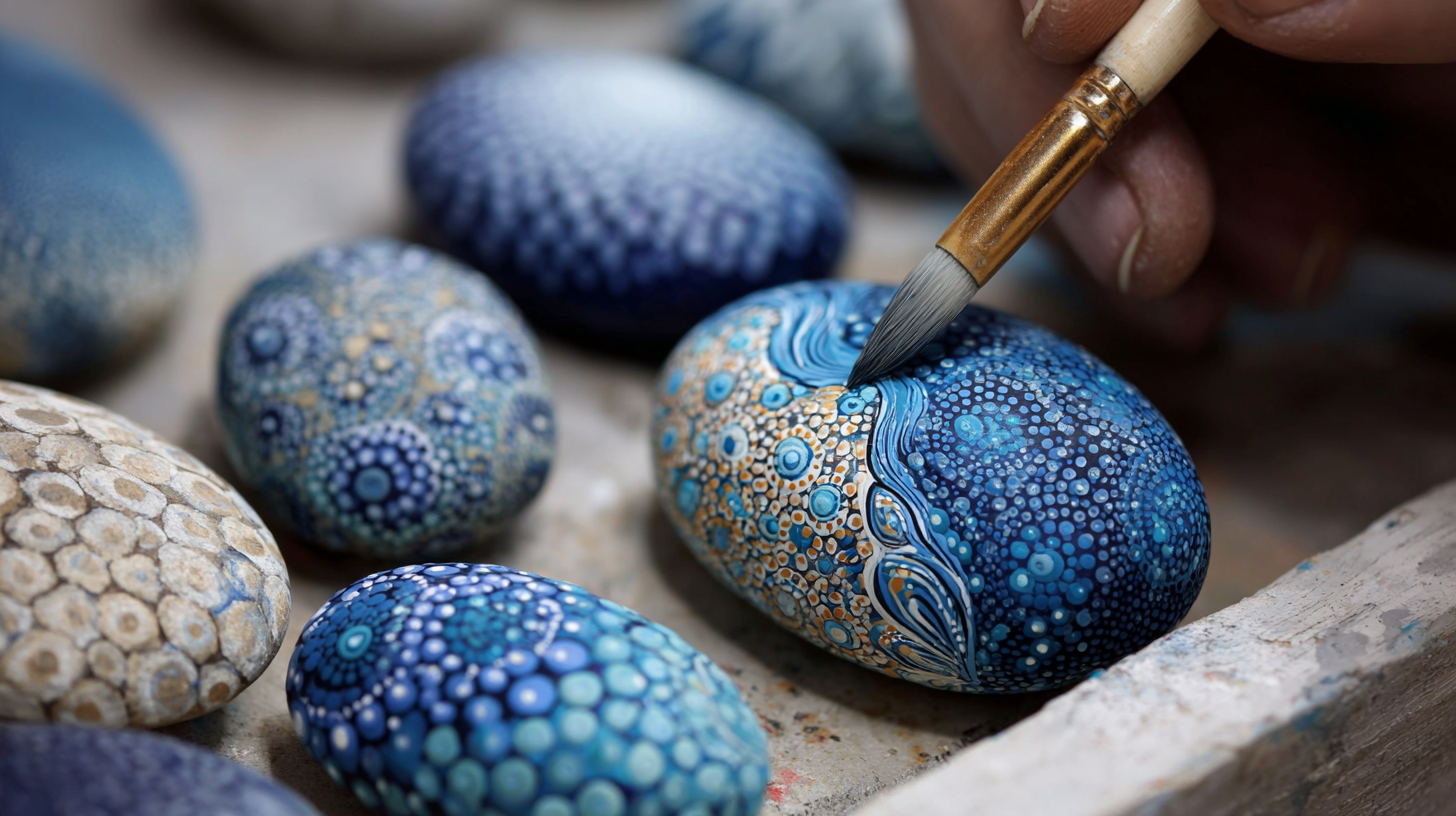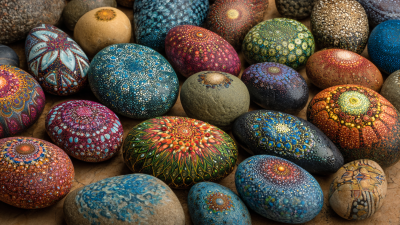Stone painting has emerged as a delightful and accessible form of artistic expression that allows individuals to create beautiful and personalized pieces with just a few simple techniques. This guide aims to provide beginners with essential tips and strategies for mastering the art of stone painting. Whether you are a complete novice or looking to enhance your skills, understanding the basic tools, techniques, and creative approaches will empower you to produce stunning designs on stones.
 From selecting the right type of stone to experimenting with various paints and brushes, each aspect plays a crucial role in your artistic journey. With the right guidance, patience, and a touch of creativity, you can easily transform ordinary stones into extraordinary works of art that reflect your personality and creativity.
Join us as we explore the fascinating world of stone painting, where every stone holds the potential for a unique masterpiece.
From selecting the right type of stone to experimenting with various paints and brushes, each aspect plays a crucial role in your artistic journey. With the right guidance, patience, and a touch of creativity, you can easily transform ordinary stones into extraordinary works of art that reflect your personality and creativity.
Join us as we explore the fascinating world of stone painting, where every stone holds the potential for a unique masterpiece.
When embarking on the journey of stone painting, one of the first and most crucial steps is selecting the right stones. Ideal stones for painting should have a smooth surface and be relatively flat, as these features allow for better application of paint and more intricate designs. Look for stones that are free of cracks and deep grooves, as imperfections can hinder your artwork. Local riverbeds or craft stores can be excellent sources for quality stones, providing a variety of shapes and sizes for creative expression.
Once you've gathered your stones, consider the natural colors and textures that can influence your painting style. A darker stone may serve as a beautiful backdrop for brighter colors, while lighter stones can offer a canvas for gentle pastel shades. Experimenting with different textures can also enhance your overall design; try painting on porous stones, which may absorb paint differently, adding to the visual effect. Whether you're aiming for a basic pattern or an elaborate scene, choosing the right stones can set the foundation for a successful painting experience.
When embarking on the creative journey of stone painting, having the right supplies is crucial for beginner artisans. A survey by the Craft and Hobby Association revealed that over 60% of DIY enthusiasts believe that having quality materials significantly enhances their overall crafting experience. To get started, you'll need a selection of smooth, clean stones, which can typically be found in gardens or purchased from craft stores. Flat river rocks work exceptionally well, providing an ideal canvas for vibrant designs.
Next on your supply list is a set of high-quality acrylic paints. According to a report from Market Research Future, the global acrylic paint market is projected to reach $5 billion by 2025, driven by its popularity in both indoor and outdoor projects. These paints are water-resistant once dry, making them perfect for stone painting, especially if you plan to display your creations outdoors. Additionally, brushes of various sizes are essential for different detailing techniques, and a sealing spray can help protect your artwork from the elements. Having these essential supplies will not only empower your creativity but also ensure longevity in your beautiful stone artworks.
Stone painting is a delightful form of artistic expression that combines creativity with the natural beauty of stones. To begin your stone art journey, it's essential to familiarize yourself with basic painting techniques. According to a report by the Craft and Hobby Association, the crafting industry has seen an approximate growth of 25% over the last five years, with stone painting rapidly gaining popularity. This trend highlights the increasing interest among beginners eager to create unique artworks that can be displayed in gardens or as decorative pieces in homes.
Embarking on stone painting requires a few fundamental techniques. First, selecting the right materials is crucial; using acrylic paints, which are water-resistant and durable, allows your artwork to withstand outdoor elements. Moreover, mastering simple techniques like dot painting and layering can elevate your stone art. Research from the National Endowment for the Arts indicates that engaging in such creative hobbies not only boosts mental well-being but also fosters a sense of community among artists. Therefore, as a beginner, start by practicing these basic skills, and you’ll soon find yourself captivated by the process of transforming ordinary stones into captivating art pieces.
| Technique | Materials Needed | Skill Level | Time Required | Tips |
|---|---|---|---|---|
| Basic Dot Painting | Acrylic paints, dotting tools, stones | Beginner | 1 hour | Start with simple patterns, practice your dots |
| Wash Technique | Watercolors, brushes, stones | Intermediate | 2 hours | Experiment with color blending on stone |
| Stenciling | Stencils, acrylic paints, sponges, stones | Beginner | 1.5 hours | Choose designs that fit well on the stone surface |
| Freehand Painting | Acrylic paints, brushes, stones | Advanced | Varies | Practice sketching designs before painting |
| Textured Painting | Acrylic paints, palette knife, stones | Intermediate | 1 hour | Use a palette knife for unique effects |
When it comes to stone painting, ensuring the longevity of your artwork is crucial. One of the most important steps in preserving your painted stones is applying a protective sealant after the paint has dried completely. Choose a sealant that is specifically designed for outdoor use if your stones will be displayed outside. Acrylic sealants or polyurethane sprays work well; they create a waterproof barrier that protects against rain, UV rays, and other environmental factors. Be sure to apply several thin layers rather than one thick coat, which can trap moisture and lead to bubbling.

In addition to sealing, consider storing your painted stones in a dry area if they are not featured outdoors. This can help prevent degradation from humidity and extreme temperatures. If your stones are exposed to sunlight, periodic touch-ups might be necessary to refresh their appearance. Regularly inspect your artwork for any signs of wear, and don’t hesitate to reapply sealant as needed. By taking these steps, you can ensure that your painted stones remain vibrant and beautiful for years to come.
Exploring the world of stone painting opens up a treasure trove of creative ideas that can inspire your projects. One captivating approach is incorporating nature-themed designs, where you can paint vibrant flowers, intricate leaves, or even animals directly onto the stones. These designs not only beautify your outdoor spaces but also connect art with the natural environment, making them an excellent addition to gardens and patios.
Another popular idea is creating personalized stones that can serve as unique gifts or home décor. You can paint inspirational quotes, family names, or significant dates on smooth stones, transforming them into meaningful keepsakes. Experimenting with different shapes and sizes of stones adds an extra layer of creativity. Using a variety of colors and techniques, such as layering or dot painting, allows your imagination to take flight, making each stone a one-of-a-kind masterpiece. Whether you’re decorating your home or sharing your creations with loved ones, each piece reflects your personal touch and creativity.







